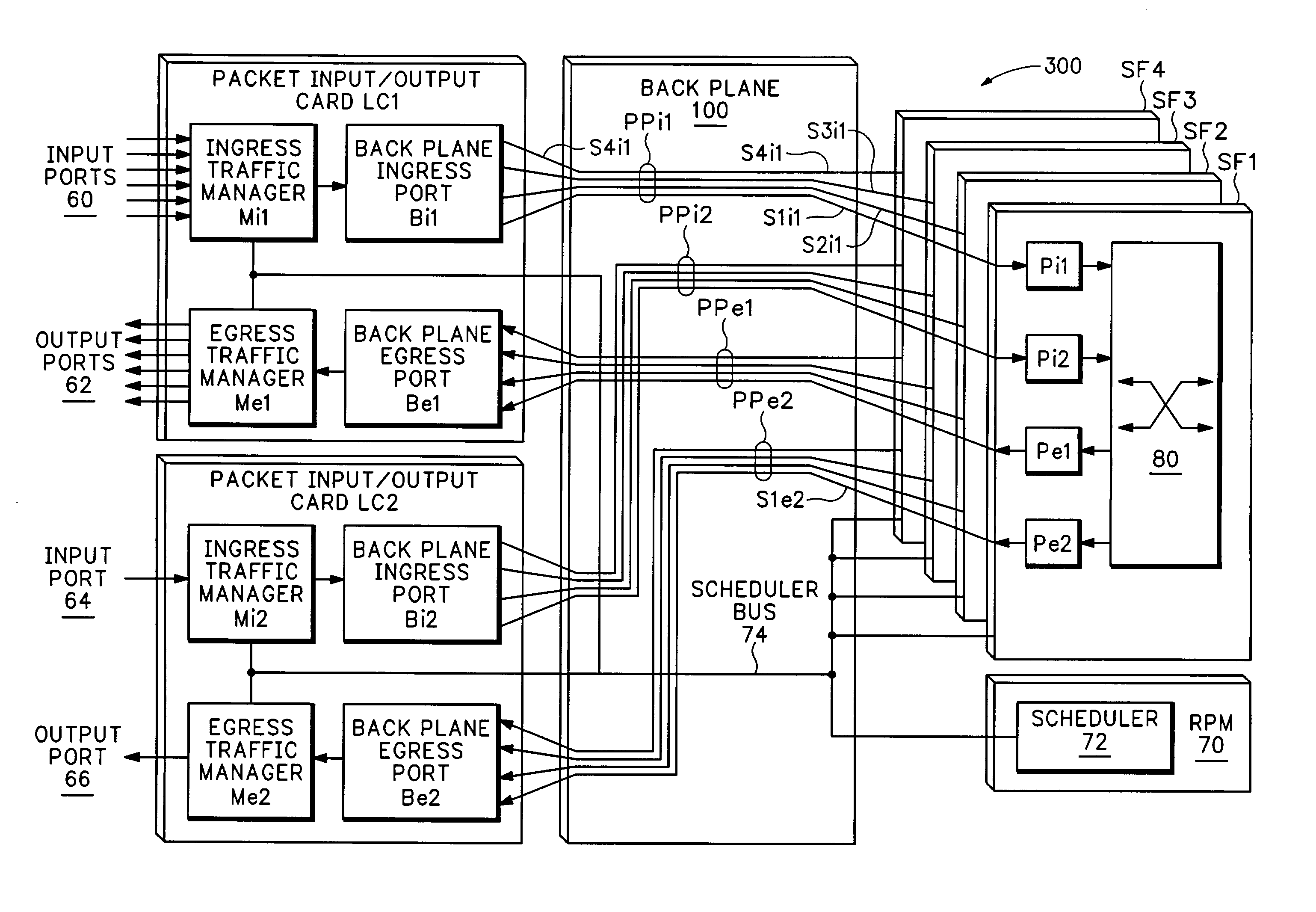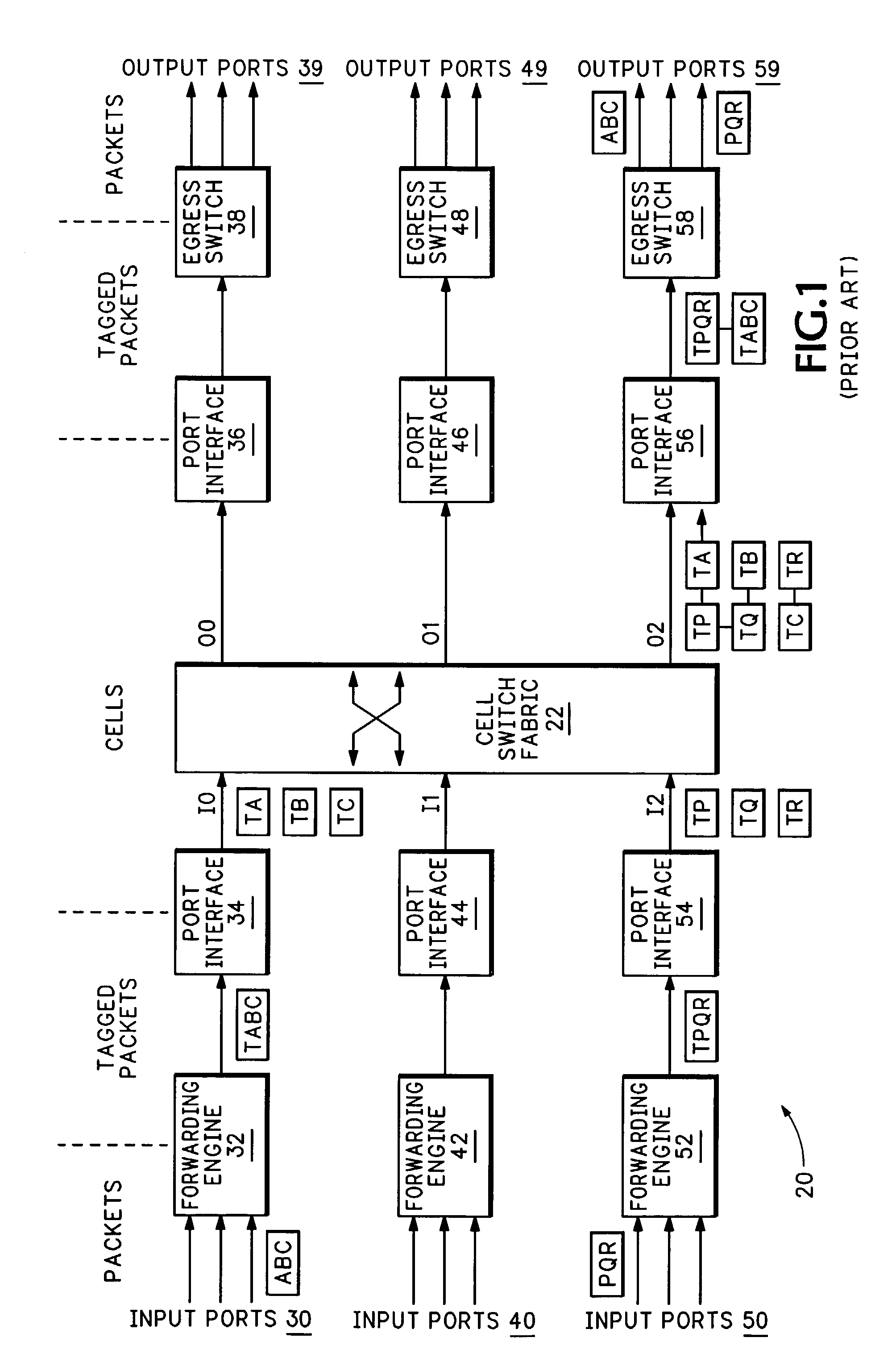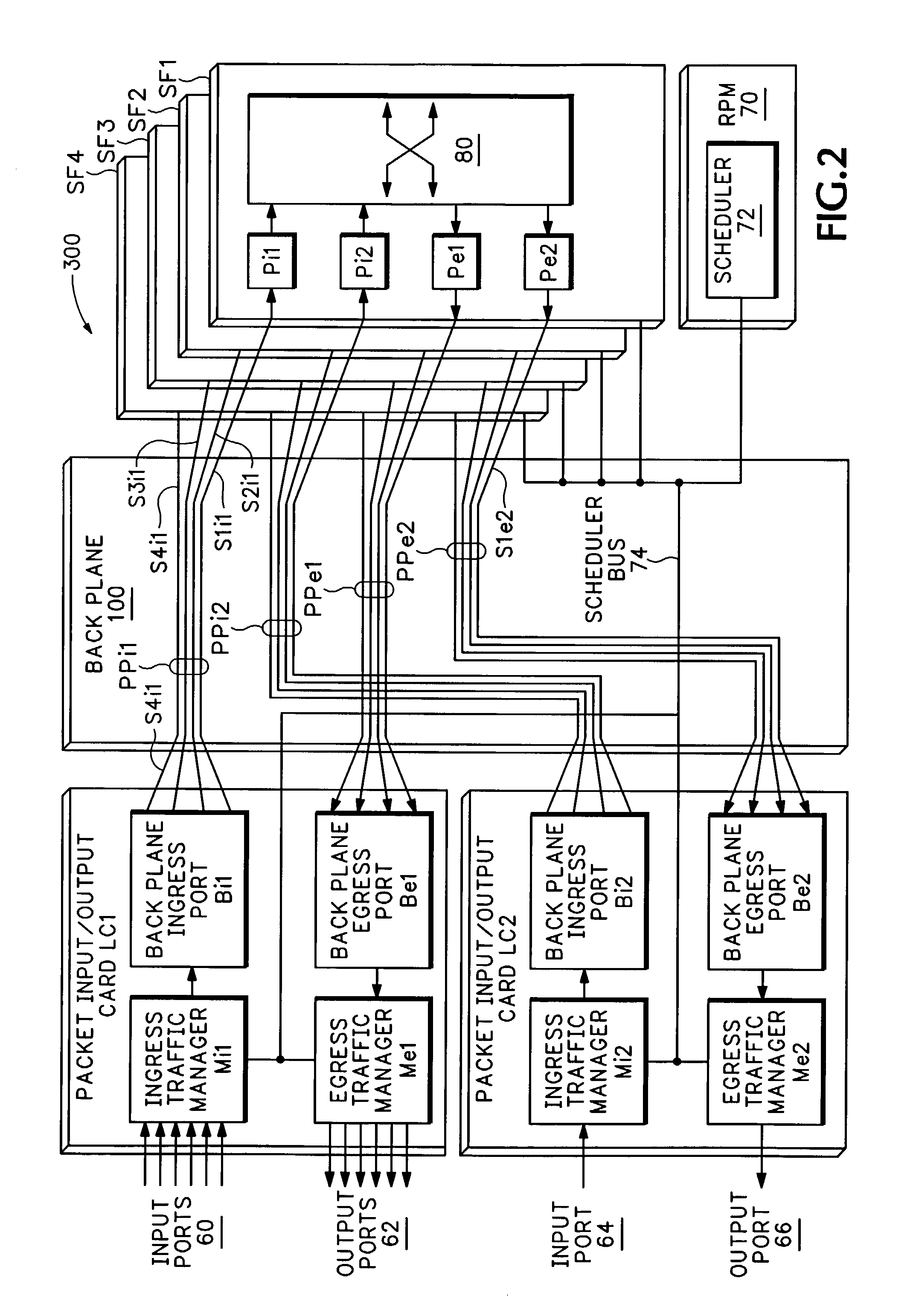High-speed router switching architecture
a high-speed router and switching architecture technology, applied in the field of switches, can solve the problems of affecting the speed of the router, and affecting the efficiency of the network, so as to facilitate the handling, and reduce the number of core switching decisions
- Summary
- Abstract
- Description
- Claims
- Application Information
AI Technical Summary
Benefits of technology
Problems solved by technology
Method used
Image
Examples
Embodiment Construction
[0035]As an introduction to the embodiments, FIG. 2 shows a basic diagram for a router according to an embodiment of the invention. The router comprises two packet-input / output cards, LC1 and LC2, four switch-fabric cards, SF1, SF2, SF3, and SF4, and a route-processing module RPM 70, all connected to a backplane 100.
[0036]The packet-input / output cards, also known as “line cards”, provide physical data interfaces for communicating data from or to the world outside of the router. Card LC1 shows six input ports 60 and six output ports 62, e.g., optical Gigabit Ethernet ports. Card LC2 shows one input port 64 and one output port 66, e.g., optical 10-Gigabit Ethernet ports or OC-192 POS (Packet-Over-Sonet) ports. Of course, the invention is not limited to any particular number, type, or distribution of ports, but FIG. 2 is exemplary. Likewise, at least one line card and two output ports are necessary to provide meaningful data-routing, but the invention is not limited to any maximum numb...
PUM
 Login to View More
Login to View More Abstract
Description
Claims
Application Information
 Login to View More
Login to View More - R&D
- Intellectual Property
- Life Sciences
- Materials
- Tech Scout
- Unparalleled Data Quality
- Higher Quality Content
- 60% Fewer Hallucinations
Browse by: Latest US Patents, China's latest patents, Technical Efficacy Thesaurus, Application Domain, Technology Topic, Popular Technical Reports.
© 2025 PatSnap. All rights reserved.Legal|Privacy policy|Modern Slavery Act Transparency Statement|Sitemap|About US| Contact US: help@patsnap.com



